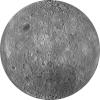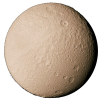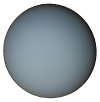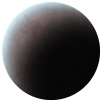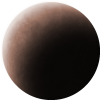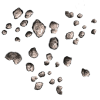Table of Contents
Guide to Planets
This is a guide to help people better understand how to create planets, but also, what they can add to a planet to 'flavor' it up a bit and seperate it from the norm. This guide was originally started out as something for the Kingdom of Neshaten faction by it's FM, but a request by the site's administrator changed that.
Creation Process
When creating a planet, it is good to remember that you need to have a balance in what goes into the planet and also the system that planet is attached to. If you are going to make a planet for an already established system, but a system that presently doesn't have any information on it, then make sure to ask the settings manager first.
The first thing to look at is this site: Star System Generator, a note - even though this links to a star system generator, that generator also generates the planets and all of the information that you would need.
Once you have a system, you can work on the planets. Naturally, you can alter some of the information to your need. For example, maybe you want the last planet in the system to be habitable? You can do that, just add a few small pieces of information and you've got it.
Now, that isn't the only thing about planets that you can do with it. A planet, while the generator does give you some neat things (like wreaked starships and such) you can put a lot more on a planet. It is impossible to assume that every planet in the universe would be just like our Earth, or like the planets in our local star system, if you've seen Venus then you know that a planet can have a situation much different from our own.
What this means is that you can add other things to a planet, the list below is what has been compiled thus far on what can be on a planet and what each one of the headers means.
Requirements
In order for you to have a great star system article, you will need:
- An article about the star system (in the system: namespace)
- An article for each terrestrial planet in the system (in the planet: namespace)
Using A Generator
There is a really great Star System Generator over at http://donjon.bin.sh/scifi/system/ that can be used.
Instructions
- Enter your Star System's name in the Name field.
- Check “Force this system to include a terrestrial world” if desired.
- Press the “Create” button to generate a star system.
Note that terrestrial planets (only) will have a link usable to get detailed information about the planet.
Putting It On The Wiki
If the system you generated doesn't meet your needs, you can use your browser to go back to the white screen and press the random button to generate a new seed number.
If you like the system, create the system wiki page and put the system information in an H3 “Data” section of the wiki page. The section headers for the various planets should be H4. Make sure to remove the tab spacing copied over so the text comes out correctly on the wiki. Make sure to link to the planet's page.
For the planet page, make sure to link back to the system page. Both the planet and the system pages should have at least a few sentences of original text giving the reader an overview of the star system or planet. Just copy/pasting the generated data is not acceptable. If appropriate consider adding a random small starport.
Images
The planet page will automatically include a rectangular “map” image of the surface.
Here's a neat trick, though: Note that in the planet page's URL there is the seed number and the amount of water and ice. Open the Scifi World Generator in another tab and set the image height to 175 or below and enter the seed, ice, and water numbers and then change the image type to animated globe. The generator will show your planet as a rotating gif image!
Public Domain Images
We also have some public domain images (from NASA) available here: Public Domain media
Other Useful Images
Animated Planets
Check the media manager.
Special Features
Sometimes the generator will add special features like Advanced Alien Artifacts. Remember to avoid making these overpowered. Here's a good guide to what alien artifacts might be: http://www.xenology.info/Xeno/24.3.3.htm
Examples
The following pages are good examples of what your results should look like:
- Yicuqibu and Yicuqibu I
Seeds
This section contains seed numbers known to generate useful and/or interesting results. Most of these were generated with the “Force terrestrial world” box check so you should check the box to get the correct result.
Note: if you create a wiki article using one of these, please remove it so we don't end up with two identical systems.
Alien Homeworlds
- 1591665970
- 963171758
- 1953647616
- 1434446031
- 539609271
- 914834808
- 2106135219
- 1254737928
- 934072714
- 92910094
- 1875054549
- 342338342
- 1335722707
Dense Breathable
- 997801477 with plants
- 691394976 algae
- 33774793 white giant
- 992121701
- 1908266896
- 1850931631
- 311940438
- 364745739 colony (cc, f)
- 999989994 (f)
Standard Breathable
Breathable planets are rare. Don't hog them!
- 1384976362
- 1345940364 (f)
- 873048810
- 144586420
- 1046664169
- 608960
- 949254148
- 581429327
- 476433909 (no water)
- 1964944270
- 1347247131
Thin Breathable
- 1307242345
- 867741567
- 1847264956
- 1774772041
- 1795620836
- 1888513888
Trace Breathable
- 225195505
- 1312109862
Other Stuff of Interest
- 1270773869
- 1871873766
- 681889081
- 1308805395 algae
- 405029992 algae, silicon based (f)
- 658336991 arthropods
- 308805514 worms
- 601170514 fungi
- 364745748 bryophytes (cc, force)
- 1345942402 5 Cthonians
- 675379875 nanotech fungi
- 1144366345 blue white with cthonian, oceanworld
- 1347243252 Cth
- 1040686401
Planetary Classifications
A classification is a type of anomaly that a world might have, this can range from being a perfect pearl world where the climate is great for habitation, or, more likely, could make the world even more hostile than the depths of outer space. There are many different anomalies that a world can have, and the following list is not exhaustive.
Desert World
A desert planet resembles a standard garden world, except for having very little of one key resource: Water. The sky is clear, except during sandstorms, and life barely hangs on. These worlds tend to be smaller and have thinner atmospheres than most standard worlds. A world without an atmosphere is simply barren, not a desert world.
Ice world
In most cases, ice worlds are literally made of ice, having formed far from their star; though not so far that their atmosphere has frozen on as well. Sometimes an ice world is an ocean world that is simply going through an ice age.
Water World
A water world is a terrestrial planet with so much water it has almost no (or even absolutely no) land area. In extreme cases, its oceans may be miles deep. These worlds may have life, but usually do not produce complex life, as life on land is considerably more challenging. The most likely worlds to have this condition (and to have the most extreme examples of it) are also the largest; worlds with dense helium atmospheres that for whatever reason were not able to gather enough material to become gas giants. Standard worlds may also less commonly have this condition.
Hollow World
A hollow world is a world that has a network of tunnels that run throughout its crust. These tunnels may have no explanations, or there may be speculation that natural processes, native creatures, or long-dead colonists were responsible. Whatever their origins, these tunnels can be large enough for cities to be built inside, and even for starships to pass through. The protection of miles of rock can make these worlds difficult to bombard or invade.
Eden World
An Eden World is ideal for colonization, having a benign atmosphere and biosphere, and just the right balance of climate and temperature. Newly-discovered worlds of this type are coveted by many factions, and they are very rare!
Electromagnetic Storms
An anomaly that can be found on some worlds, EM storms can cause electronics to malfunction or burnt out, and can bring down starships, if they are not prepared. Even regular shield systems aren't effective in combating an EM storm. EM storms are particularly effective at interfering with sensor equipment. They are particularly common when the world in question is a major moon of a gas giant.
Planetary Special Conditions
The following are planetary conditions that take the place of the specials tag when creating planets. These conditions are optional when creating planets, they are mainly there to add a bit more depth to a planet. Particularly interesting planets are those that have both special advantages and flaws, for example, a world with a noxious atmosphere that also has a cavern system, encouraging residents to take shelter in pressurized habitats underground.
Ground Based Conditions
Ground Based Conditions refers to conditions that are found below its cloud cover.
Dense Cloud Cover
Planets with dense atmospheres, especially large terrestrial planets (for gas giants, it goes without saying!), are often cloudy everywhere, all the time. This type of cloud cover makes it very difficult to see the surface with visual sensors, and can often obscure other sensors as well.
Extreme Tectonic Activity
An unstable world that is largely unsuitable for the world is almost constantly shaking, forming mountains, or even liquefying. Engineers must take extraordinary measures to build anything lasting, and farming is mostly fruitless due to the broken terrain. Such worlds are also typically volcanically active, which offers something of a silver lining: They are likely to have valuable resource deposits exposed near the surface.
Noxious Atmosphere
A Noxious atmosphere is one where the planet is not suitable by any lengths for colonization without the use of highly advanced life support systems, but this is depending on what makes up the atmosphere; some of these atmospheres might actually be dangerous to buildings.
Dense Flora
A planet that is covered in dense flora makes for a good planet to house agricultural industries, but also makes life difficult on invading forces.
Atmospheric Instability
Atmospheric Instability refers to a planet whose atmosphere is slowly being 'bled' away, the atmosphere on the planet is so unstable that there are 'holes' in it, which means that there might be areas on the planet that can't support life while other areas can.
Volcanically Active
This type of planet is highly active in terms of volcanic activity, earthquakes are also common-place and the land is usually covered in molten seas and lakes. The average temperature may be to high for people to explore the planet without specialized equipment and even then setting up buildings is next to impossible. A phenomenon known as 'lava-rain' usually plagues these types of planets.
Lava Rain
Lava Rain is essentially lava that has been spewed into the air at such high velocities that it comes back down to the planet in the form of rain, usually resembling very thin threads that are capable of puncturing bodysuits and most lightly armored individuals, this type of rain can also destroy equipment and can severe damage to starships that may fly through it.
Ancient Ruins
These ancient ruins are evidence of a once long dead civilization, although whether they are the remains of a city or a small outpost remains to be seen. Such ruins could contain a wealth of information or even a great deal of danger.
Orbital Conditions
Like the ground based conditions, this one relates to what might be orbiting a planet.
Dense Planetary Rings
Dense Planetary Rings are a boon to mining corporations, due to the large numbers of asteroids that make up the rings themselves. These defence rings can also serve as a perfect location for a planetary defence network, such as star fighter hangers built into an asteroid or large gun emplacements.
Derelict Starship
Derelict Starships can either be a boon or a hindrance depending on what is contained within; such ships can either be big or small, wide or narrow.
Derelict Station
Similar to a derelict starship, derelict stations can pose both a positive or a negative depending on what is found within. Some of these stations could be in a decaying orbit, which means they would eventually crash onto the planet and depending on their size - they could easily cause considerable damage upon impact.
Moons
Self-exclamatory.
Close Orbital Planetoids
While similar to moons, they differ in that they are not located in a stable orbit, these particular types of moons are dangerous because of how close they orbit their parent planet. Most planets that possess these types of moons may in fact not have a stable atmosphere or no atmosphere at all.
Star Army Guide to Types of Planets
As seen on SARP's Star Map, the Kikyo Sector has a wide variety of star systems, and those star systems have a wide variety of planets. Though every planet has its own unique properties, they can be grouped together into general types. This guide may also help to understand the star system creation guide, by describing the range of environments that might be generated using the Star System Calculator.
The broadest way to classify planets is by their overall size. While size alone doesn't determine a planet's type, planets can be classified this way because their black body temperature, in conjunction with the planet's mass, determines the heaviest molecules the world can retain in its atmosphere. This means planets closer to their star, and orbiting brighter stars, might be more massive than colder planets that have been placed into a larger size category.
Since helium and hydrogen are the two most common elements in the universe, worlds that are large enough to retain helium usually, but not always, grow large enough to also retain hydrogen, and become gas giants. 'Standard' worlds are too small to retain helium, but still large enough to retain the all-essential water molecule. If they are in a star's habitable zone, they may have liquid-water oceans, a requirement for carbon-based life. Worlds somewhat smaller than this may still be able to retain dense nitrogen-based atmospheres, useful for exploration and terraforming. Smaller worlds never have significant atmosphere, and are only rarely of interest.
Gas giants themselves come in many sizes, from ten times the mass of a standard world to thousands of times that. Their moons are more likely to draw interest than the gas giant itself, though the radiation belts of gas giants can pose a significant hazard. The largest gas giants grow increasingly dense, eventually reaching the point where they ignite helium fusion in their cores, and become brown dwarf stars.
Units
Before we can really talk in detail about exoplanets we need to have an understanding of units we use for Density, Temperature, and Planetary Mass. The Average Density of a Planet is of course roughly a planets mass divided by the Approximate Volume it would have it it was a perfect sphere. Density is measure either in units of kg/m^3 or g/cm^3. One kg/m^3 equals 1000 g/cm^3. The Average Surface Temperature of a planet is measured in either degrees Celsius or degrees Kelvin. The conversion from Celsius to Kelvin is simple as 0 C = 273.15 K. The Planetary Mass like all masses is first and foremost measured in units of kilograms. However, most planets then to have masses on order of 10^24 or 10^27, therefore to make thing more manageable, we use the units of Earth_Mass (ME) and Jupiter_mass (MJ),which are based on the Mass of Earth and Jupiter. Generally Jupiter is 317.8 time more massive than Earth (1 MJ = 317.83 ME), so one normally uses Earth Mass for Terrestrial Planets and Jupiter Masses for Gas Giants. Compared to the sun; however, Jupiter is very small, in fact 1 Sol or Solar_Mass 1048 time 1 MJ. The table below highlights conversions between various mass units
| Mass Unit | Symbol | Conversion to kg | Conversion to ME | Conversion to MJ | Conversion to Sol |
|---|---|---|---|---|---|
| 1 Earth Mass | 1 ME | 5.98 E24 kg | 1 ME | 1/(317.83) MJ | 1/(332,775.92) Sol |
| 1 Jupiter Mass | 1 MJ | 1.8986 E27 kg | 317.83 ME | 1 MJ | 1/(1048.14) Sol |
| 1 Solar Mass | 1 Sol | 1.99 E30 kg | 332,775.92 ME | 1,048.14 MJ | 1 Sol |
Terrestrials
Super Earths vs. other Terrestrials
- Def of Super-Earth (Mass Range of 1.5 ME to 10 ME)
- Def of Dwarf Planet (Mass Range less than 1/80 ME)
Silicate Planets
General Silicate Planet
- Def of Silicate planet
- terrestrial planet with a silicon mantle and typically and iron core
Examples: Earth, Iroma, Mars…. etc.
Core-less Planets
- planet with a silicon crust but completely lacking in a magnetic iron core, meaning it lack at magnetic field
Coreless Lava Worlds
Examples: Venus
Coreless Rocky Deserts
Examples: Moon and most other planet barren moons
Habitable Earth-like Planets
Examples: Earth Suggestions?
Forest Planets
Suggestions?
Swamp Planets
Suggestions?
Ice Rock and Ice Planets
Examples: Europa, Pluto?
- cryovolanic ocean words is a subcategory of this…
Rocky Desert and Desert Planets
Examples: Mars
- If no atomosphere is very soft landing
- Many are prone to violent storms
- May have flash flooding
Iron Planets
General Iron Planets
Desert Rock Worlds
Examples: Mecury
Ice Rock Worlds
Examples: Ceres
Carbon Worlds
General Carbon Worlds
Example: Titan
"Swamp"
Cryovolcanic
Example: Pluto?
Ice
Examples: Moons of Uranus and Neptune
Terrestrial Ocean
Ocean_planet Ocean planets; however, tend to cross over also more into other categories. Except for a handful or silicon ocean planets that will be covered. Although Theoretically possible no carbon-silicate ocean worlds have been seen
General Ocean World
Cryovolcanic Silicate Ocean Worlds
- underground oceans that serve as a mantle of the planet.
Example: Ganymede
Super Earth Silicate Ocean Worlds
Carbon Ocean Worlds
Example Titan
Small Gas Giants
| Mass: | .13 - .30 MJ (12 - 96 ME) |
|---|---|
| Density | 250 - 2,000 kg/m3 |
Cold Neptune
| Semi-major Axis | > 1 AU |
|---|
Examples: Neptune and Uranus
Hot Neptune
| Semi-major Axis | < 1 AU |
|---|
Chitonians
Example: Corot-7b
Large Gas Giants
Jupiter-like Gas Giants
Example: Saturn and Jupiter
Hot Jupiter
| Mass | 1 - 25 MJ |
|---|
Non-standard Planet Types
Some planets do not fit into the general pattern, resulting from extraordinary cosmic events or works of artifice.
Artificial Planets
- Constructed worlds from an ancient era of much higher technology, these mega-structures can take many forms, such as rings and helices, or hollow cylinders and spheres containing atmosphere and artificial gravity. They often have far more living space than a naturally-formed world with a livable surface. These are extremely rare.
Pulsar Planets
- Generally little is known about the exact composition of these planets as they are planetary core remnants that have survived supernovas, still orbiting their parent star. It can be certain that they are not habitable, and they can be dangerous, depending how far they are from their pulsar.
Rogue Planet
- A rogue planet is a planet without a star, and as such they tend to be very, very, very cold, with no source of heat other than gravitational contraction and radioactive decay. They are difficult to detect, often uncharted, and can make good hideouts for those lucky enough to find them. Rogue planets form around stars, but can be ejected by any number of means, most often a close encounter with an erratically orbiting gas giant, or another star.
